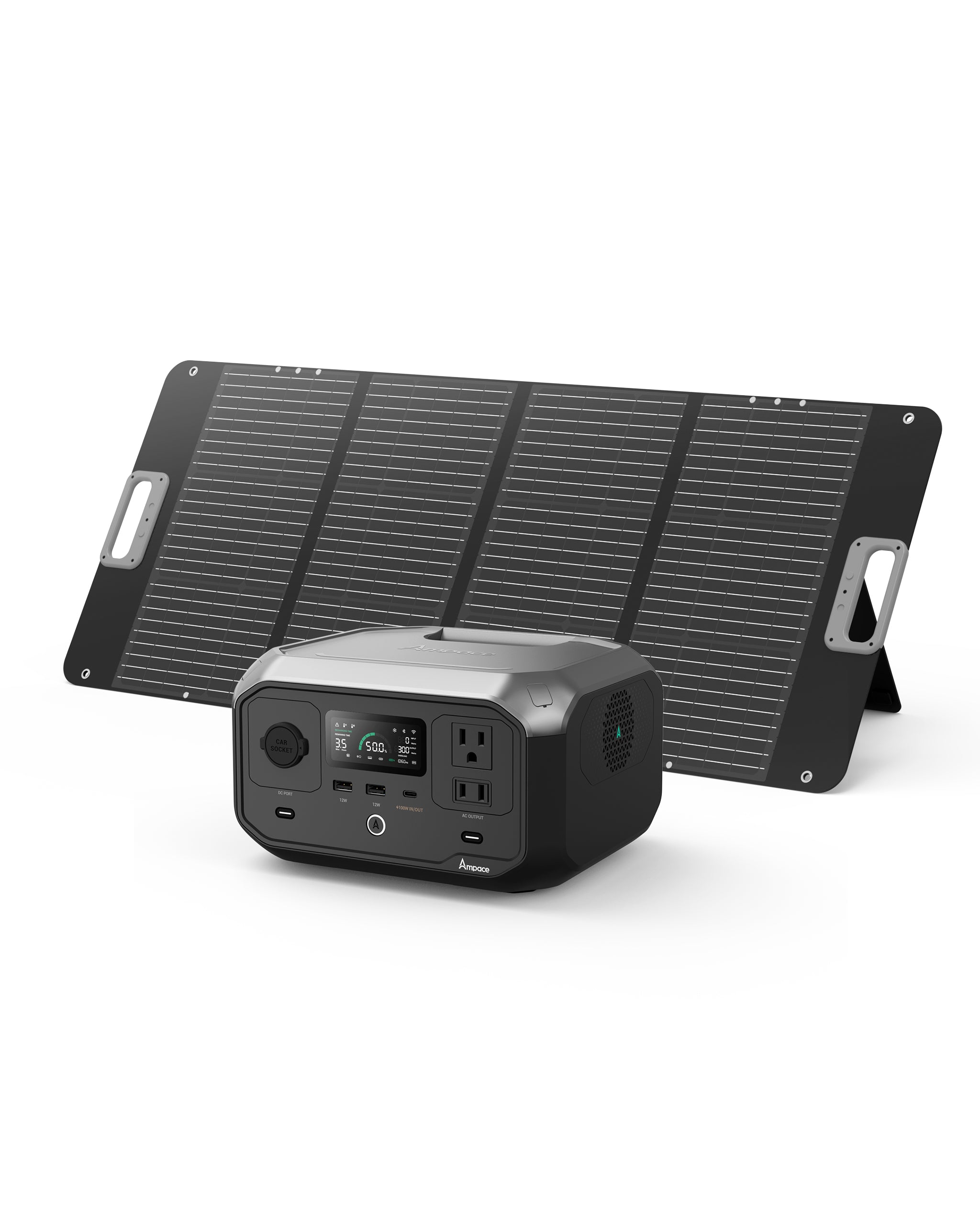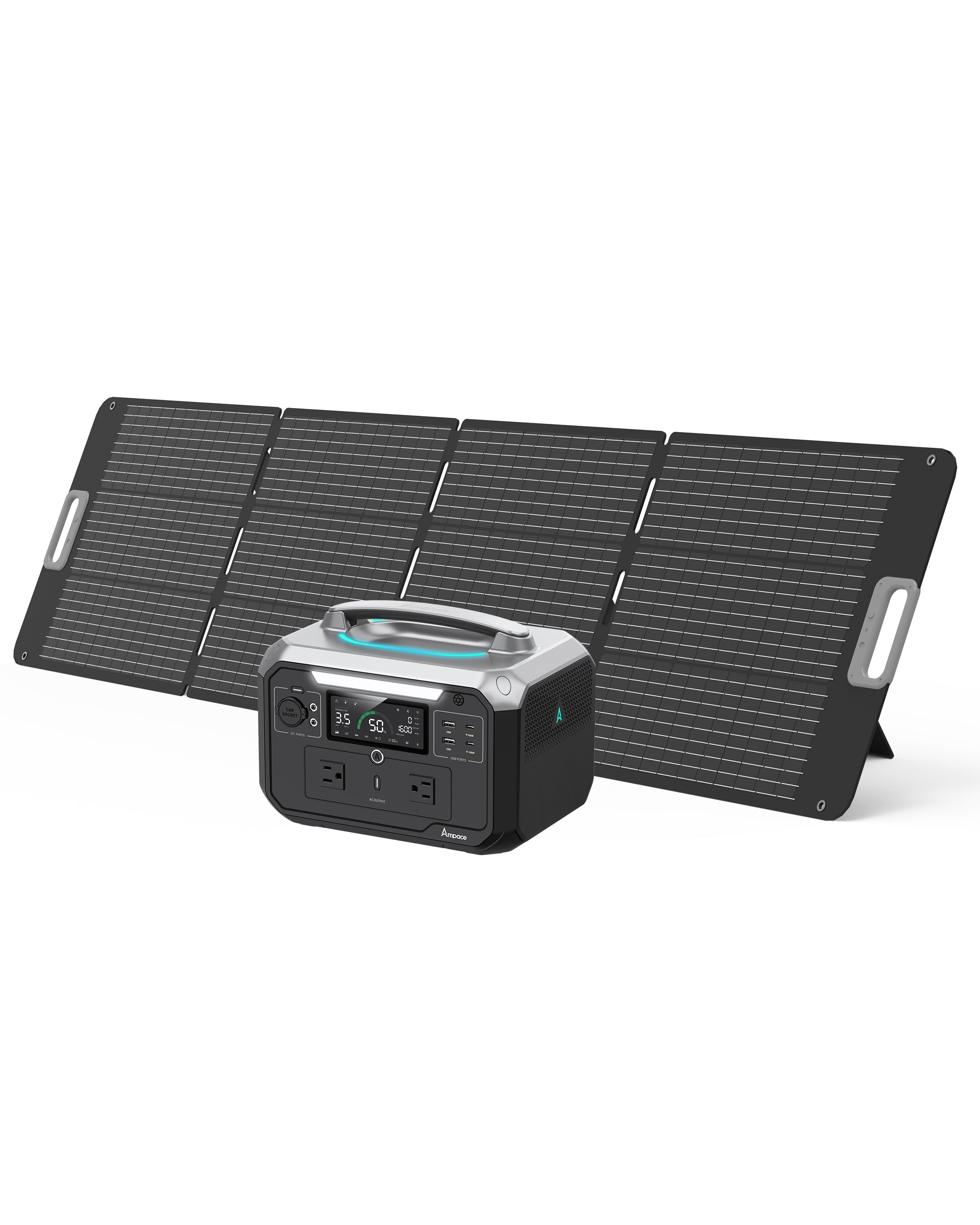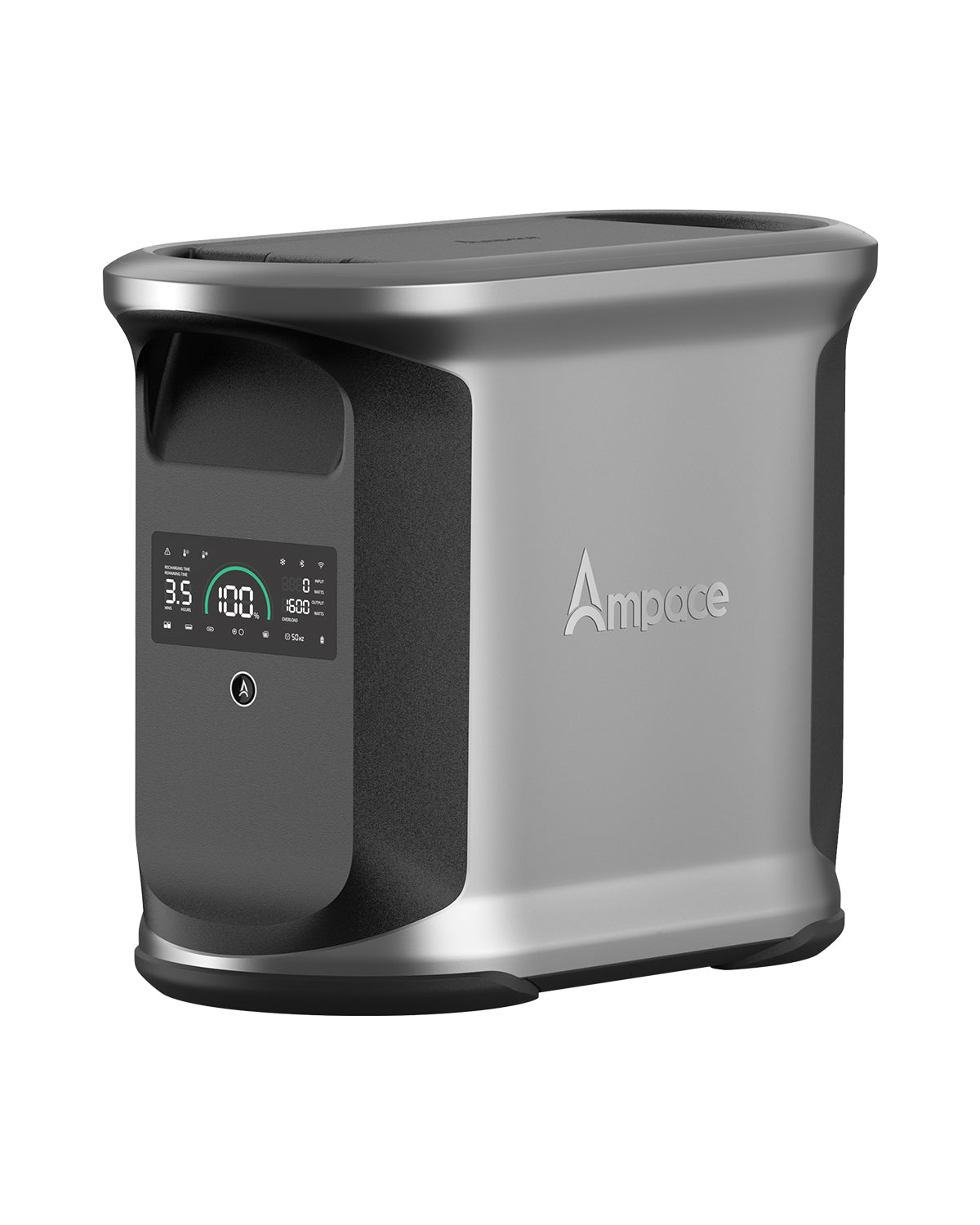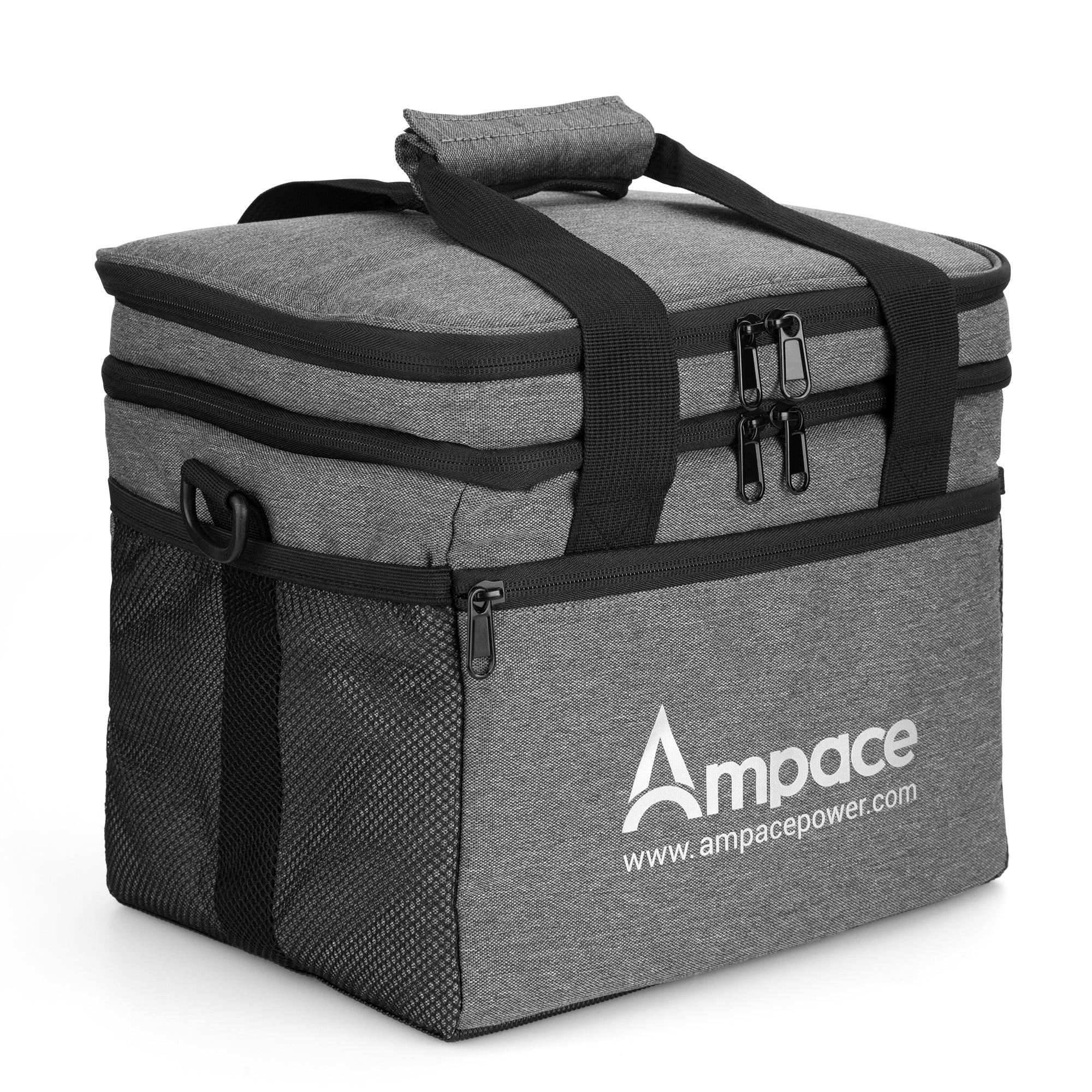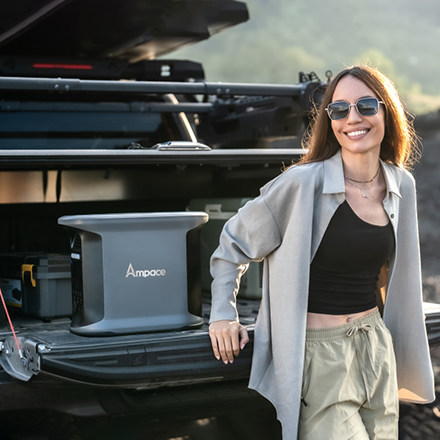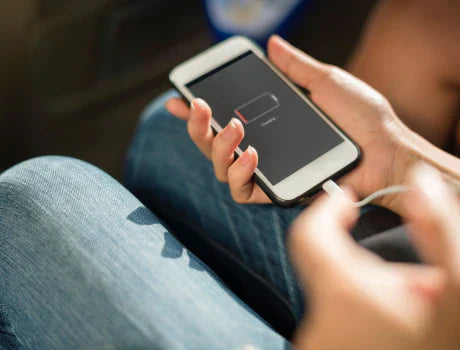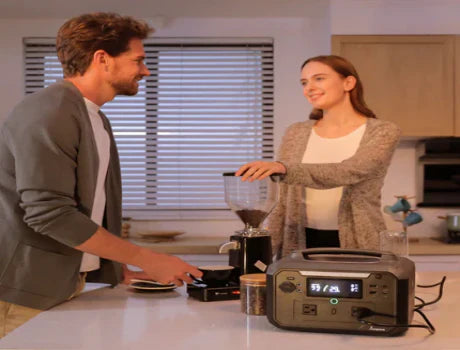The 72-Hour Hurricane Power Plan: What to Charge Before, During, and After the Storm
When a hurricane is approaching, the ticking clock is a powerful reminder that time is your most valuable asset. The power you secure in the 72 hours before, during, and after the storm can mean the difference between managing a situation with confidence and being left in the dark, both literally and figuratively. This isn't just a basic checklist of things to buy; this is your strategic power plan, a methodical framework designed to remove anxiety and give you back control in a stressful situation.
For many, the thought of a multi-day power outage brings a flood of worries: spoiled food, dead phones, and, most critically, a lack of communication. While traditional generators are one option, their noise, fumes, and fuel dependency make them less than ideal. This guide introduces a smarter, more resilient solution: a three-phase approach built around a quiet, safe, and powerful portable power station like those from Ampace. It shifts the focus from a passive list of items to an active, step-by-step strategy for maintaining safety, communication, and comfort when you need them most.
The Prep-Charge (72-48 Hours Before the Storm)
The period before a hurricane's arrival is a race against time. The goal of this phase is simple: to use the grid power you still have to build a complete energy reserve. Your mantra here is "Maximize." You want to enter the storm with every single battery, from your phone to your primary power station, at 100%.
Step 1: Create a Charging Hierarchy
In the chaos of preparing, it’s easy to just plug in everything at once. A better approach is to prioritize. Think of it as a charging hierarchy, starting with the most critical items first.
-
Your Power Lifeline: The very first thing you plug in must be your emergency power supply — your portable power station. Your home's grid power is about to disappear, and your Ampace power station is your last, best source of backup energy. Get your Ampace power station to 100% capacity first. This is the heart of your entire hurricane power plan, and its full charge is non-negotiable.
-
Medical and Safety Devices: Next on the list are any batteries for critical medical equipment, such as CPAP machines, portable oxygen concentrators, and electric wheelchairs. These devices are non-negotiable. Ensure they are fully charged and ready to run for as long as possible.
-
Communication and Information: Charge all cell phones in the household. While you should minimize their use later, having every device at full capacity is a smart move. Also, charge any dedicated power banks and, crucially, a NOAA weather radio. Having a reliable source for critical updates is the most important part of your what to charge before a power outage list.
-
Lighting and Small Comforts: Finally, plug in all rechargeable lanterns, flashlights, and portable fans. These simple items will make the hours of darkness far more bearable, and charging them now means you won't have to waste your portable power station's precious energy on them later.
Step 2: Preserve Your Primary Power Sources
Once your devices are fully charged, the second step is to stop using them unnecessarily. It's a fundamental part of any robust hurricane power plan. Put charged cell phones on airplane mode or turn them off completely. Unplug laptops and other devices. The goal is to enter the storm with every battery at 100%, so you have a full tank of energy for the days to come. This simple discipline will buy you hours, if not days, of crucial power.
This phase is all about preparation. For more in-depth advice on what to pack and do before a hurricane hits, the Federal Emergency Management Agency (FEMA) provides an excellent checklist that can supplement your power planning.
The Critical Hours (During the Storm)
The wind and rain have arrived, and the lights have gone out. The time for charging is over. The power is out, and the focus now shifts from preparation to CONSERVATION. Every watt-hour is precious, and your strategy must be to power only the absolute essentials. This is where knowing how to use a portable power station during a storm becomes an art form.
Rule #1: Power for Information and Safety Only
Your Ampace powerhouse is your best friend now. But you must use it with extreme prejudice.
-
Weather Radio: The very first thing you should plug into your power station is your NOAA weather radio. In the chaos of a storm, this device is your direct line to emergency services and vital updates on storm progression. A portable power station is a far more reliable way of powering a weather radio during a hurricane than relying on disposable batteries that might run out.
-
One Family Phone: Designate one cell phone as the "emergency communication" device. Keep it plugged into your Ampace station and only use it for critical communication or to check on loved ones after the storm passes. Avoid the temptation to use it for social media or entertainment, as this drains the battery rapidly.
-
Essential Medical Devices: If you rely on medical equipment, this is the time to run it directly from your power station. The silent operation of a portable power station is a huge advantage over a noisy, fume-emitting generator. The clean, stable energy provided by a pure sine wave inverter is vital for the safe operation of sensitive electronics.
Rule #2: Avoid "Phantom Loads"
A "phantom load" is the small amount of power that a device draws even when it's turned off. Think of your TV in standby mode or a phone charger plugged into an outlet with no phone connected. While these draws are tiny, over the course of a multi-day outage, they add up.
To avoid this, advise readers to unplug everything from the Ampace station that is not in active, critical use. The easy-to-read display on an Ampace unit allows users to see exactly how much power is being drawn in real-time. This helps you become a power conservation expert, making every precious watt count. This is a critical lesson on how to use a portable power station during a storm.
The Recovery (First 72 Hours After the Storm)
The storm has passed, and a sense of calm returns, but the power grid is still down. The focus of your hurricane power plan now shifts to RECHARGING and powering recovery efforts. The first 72 hours after the storm are a critical time for communication, assessing damage, and slowly returning to a state of comfort.
Safely Deploy Your Solar Panels
The first order of business is to get your Ampace power station recharging. Your solar panels are a fantastic post-hurricane recovery essentials tool, but you must deploy them safely. Wait until the wind and rain have completely stopped. Before you go outside, look for potential hazards like downed power lines and fallen trees. Once it's safe, position your Ampace solar panels for the best charge, even in the hazy or partly cloudy conditions common after a storm. Your portable power station's smart charging technology will optimize the intake of whatever sunlight is available.
Powering the Recovery
As your Ampace station recharges, you can begin to power your recovery efforts with a new set of priorities. This is where your emergency power supply begins to bring back a sense of normalcy and comfort.
-
Refrigerator (Short Bursts): The most common concern after a long outage is food safety. A portable powerhouse is a game-changer here. Rather than running the fridge constantly, you can run it for 30-60 minutes every few hours to keep food cool. This strategy is a huge selling point and a major comfort.
-
Communication: As soon as you can, re-charge all family phones so you can contact relatives, friends, and insurance companies to report damage.
-
Morale & Comfort: Your Ampace station has enough power for small morale boosters. Now is the time to power a coffee maker for a hot cup of coffee, run a small fan to circulate air, or charge a tablet for kids to watch a movie. These small comforts can make a huge psychological difference.
-
Clean-up Tools: Finally, your power station can be used to power rechargeable tools like a cordless drill or work lights for minor repairs and clean-up.
This phase is all about rebuilding, and a portable power station is an invaluable tool for that process. For a comprehensive overview of safety and recovery steps after a storm, the National Hurricane Center provides excellent resources.
Conclusion: Take Control of Your Power
A hurricane is an unpredictable force of nature, but your emergency power supply doesn't have to be. By following a clear, strategic 72-hour hurricane power plan, you can shift from a position of anxiety to one of control and safety. This framework—Maximizing power before the storm, Conserving it during the storm, and skillfully Recharging it for recovery—is your ultimate tool for preparedness.
Don't wait until the last minute to think about your power needs. Get the right tools and plan. Explore our line of Ampace power stations and solar generators today, and build the core of your family's hurricane preparedness kit.
Frequently Asked Questions (FAQs)
Can a portable power plant be used in rain?
No. A portable power station is an electrical device and should never be used or left in the rain, heavy humidity, or standing water. They are designed for indoor use or in a protected, dry location like a tent or a sheltered porch. You must bring them inside before the storm hits.
How long will a portable power plant last during a blackout?
The lifespan of your portable power station during an outage depends on its battery capacity (measured in Watt-hours, Wh) and the power draw of the devices you are running. A 1000Wh unit, for example, could run a 100W mini-fridge for about 10 hours, but a 30W CPAP for over 30 hours. Your pre-storm power audit is key to getting an accurate estimate.
What's the difference between a solar generator and a portable power station?
These terms are often used interchangeably. A "portable power station" is the battery and inverter unit itself. A "solar generator" is the complete system, which includes the portable power station and a set of solar panels to recharge it using sunlight. The panels are the "generator" part of the system.
Are these devices safe to leave 24/7?
Yes, high-quality portable power stations are designed to be left on and plugged in. They feature advanced Battery Management Systems (BMS) that protect the battery from overcharging, over-discharging, and other issues. However, during an actual power outage, it's best to turn them off when not in use to conserve power.
How can I protect my electronics from a power surge after the storm?
Even after power returns, a surge can occur, which can damage unprotected electronics. A portable power station with a built-in surge protector is one of the best ways to protect your devices. For devices plugged directly into the wall, a high-quality surge protector is essential for a safe post-hurricane recovery.
Can a portable power station recharge from my car?
Yes, most portable power plants have a 12V car charger. This can be a useful backup option for recharging your unit. However, it is an inefficient method, and you must run your car's engine to get power, which consumes gas and should be done in a well-ventilated area for safety.





